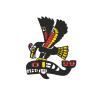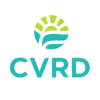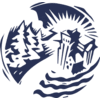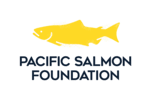Cowichan Watershed Board, February 25, 2013, Duncan, BC
Water Quality Survey and Targets: Questions and Answers
In the summer of 2012 the Cowichan Watershed Board and its partners (see section on participants below) initiated a comprehensive water quality survey of the Cowichan and Lower Koksilah Rivers as well as some of the tributaries flowing into Cowichan Bay and the Bay itself. The information below outlines the reasons for the survey, the related watershed targets, the approach to the survey, preliminary survey results, next steps and how the survey was funded.
Why is the Survey Being Conducted?
The survey is intended to support efforts to restore and protect water quality in the Cowichan Watershed including the estuary. This cooperative study which involved over 20 volunteers is will help address a number of serious water quality issues including:
• The Cowichan Bay shellfish closure in place since the early 1970s due to contamination;
• Significant fish kills (juvenile salmon) in the lower Cowichan in 2010 and 2011;
• Concern over possible water quality problems in the watershed related to cumulative impacts of turbidity, nutrients and bacteriological contamination -in the lower Cowichan and Koksilah Rivers and some of the tributaries flowing into Cowichan Bay.
How does the Survey Relate to the Watershed Board’s Water Quality Targets?
The Cowichan Watershed Board has established two water quality targets for the watershed. The first is clean water. We need to meet provincial standards for surface water quality so that people throughout the watershed can have confidence that the water is clean and not contaminated. We have established this by setting a turbidity water quality target for the watershed under the premise that if turbidity values are low, other contaminants will also be low or nonexistent.
The second target is to be able to eat shellfish from the Cowichan estuary by 2020. The clam beds in Cowichan Bay are incredibly productive and historically were a significant food source for Cowichan people but they have been closed for harvesting due to contamination since the early 1970s.
Who Participated in the Survey?
This initiative reflects the efforts of a broad partnership of governments and government agencies, businesses, stewardship groups and individuals who care about our watersheds and the people who live here. Besides the Cowichan Watershed Board which is led by the CVRD and Cowichan Tribes, the partnership includes other local governments, TimberWest, Island Timberlands, BC Ministry of Environment (BCMOE), Department of Fisheries and Oceans, BC Ministry of Forests, Lands and Natural Resource Operations, VIHA, Cowichan Stewardship Roundtable, Cowichan Lake and River Stewardship Society, Cowichan Land Trust, Cowichan Naturalists, the BC Conservation Foundation – Living Rivers and a number of local citizens who care about water and their watersheds.
We are particularly grateful to BCMOE for training and coordinating volunteers, coordinating sample analyses and analysing and interpreting the data.
What is the Approach to the Survey?
Sampling commenced in the summer to identify areas where low flows or lack of dilution may be of concern for particular parameters. Fall sampling was scheduled immediately after rain events in October and November when rains flushed materials that had accumulated on the land over the summer into the water. Scientists expected that the fall samples would yield higher values for turbidity (reduced water clarity) and that contaminants would be at their highest at the time as well. Sample sites were located in order to better determine general and in some cases specific sources of pollution. DNA analyses of bacteria were also conducted for the last round of samples to identify the biological origins of contaminants i.e. whether they were associated with humans, cows, pigs, horses or deer.
What did the Preliminary Results of the Survey Indicate?
Preliminary 2012 results can be summarized as follows.
• Significant fish kills (juvenile salmon) in the lower Cowichan in 2010 and 2011;
• Results for the Cowichan River were relatively good. A couple of Cowichan River sites were slightly above BCMOE water quality guidelines for turbidity and E.coli in the fall;
• After the fall rain events a number of sites were found to be above recommended MOE water quality guidelines for turbidity and E. coli levels in the Koksilah River and its tributaries;
• Even higher levels for turbidity and E. coli were recorded for many of the streams flowing into Cowichan Bay and not surprisingly, high levels for E. coli were also recorded in Cowichan Bay around the marina and village foreshore;
• DNA tracking indicated that cows are associated with some of the contamination in the Koksilah and Cowichan Bay areas;
• Human coliforms were found for a number of sites in the Bay (near town and at a few additional sites);
• No human coliforms were observed in freshwater sites;
• No cow-related contamination was found in the Cowichan river
• All point source locations (areas of permitted discharge e.g. sewage treatment outfalls) were found to be within operating guidelines.
BCMOE has been informing VIHA of results are they are received.
What Next Steps are Planned?
• Additional data analysis will continue;
• VIHA will monitor key sites to ensure that there is no risk to human health;
• MOE will continue sampling in key areas including some DNA tracking sampling in order to identify pollution sources.
• DFO will ensure signs indicating that shellfish should not be harvested are located appropriately and in good repair.
• Site visits will be carried out to encourage proper land use practices.
Results of further analyses are expected in the coming weeks. This will be followed by an annual summary report.
Year two of the program will focus on water quality in the upper Cowichan Watershed and following up on key areas within this year’s study area.
How is the Project Being Funded?
The Watershed Board acquired $80,000 of federal Gas Tax Funding through the CVRD and contributed it to the Ministry of Environment to support water sampling, coordination of volunteers and data analysis. This initiative represents a wide collaboration among a diverse group of partners who supported the project through funding and/or in kind contributions. In addition Cowichan Tribes received $25,000 from Health Canada to assess levels of chemical contaminants in shellfish tissues. BCMOE contributed approximately $15,000 for lab work and Island Timberlands contributed $7500 for water temperature and continuous data. BCMOE estimates that, including in-kind contributions, the value of the project exceeds $200,000.
We gratefully acknowledge all of the participants who made this survey possible.
Click below to view the presentation
Cowichan Watershed 2012 Sampling – Preliminary Results
 Email
Email



